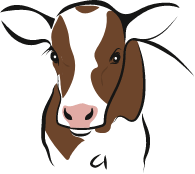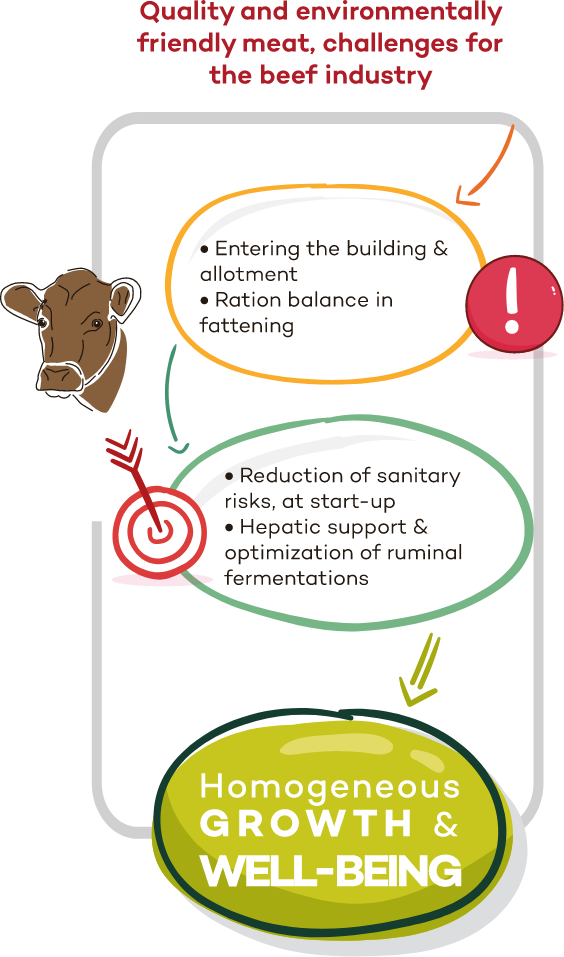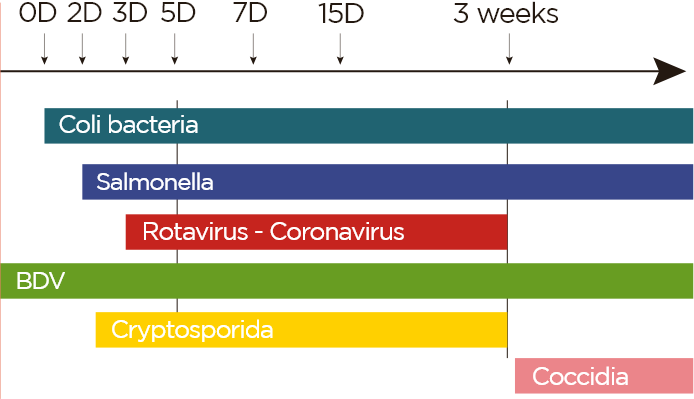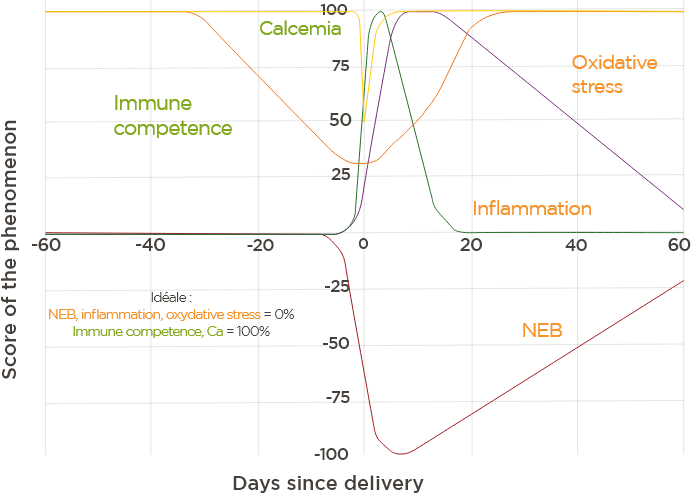Ruminant farming
has faced multiple challenges in recent years: global warming, environmental impacts, animal welfare, etc.
Offering sustainable solutions to these many challenges must make it possible to respond to the primary mission of livestock farming: to feed humanity with quality products.
Phytosynthese aims to contribute to this challenge through these products, by combining, like the “One Health” concept, animal health, health safety and environmental considerations.
Numerous scientific and field trials have validated the effectiveness of the products so that they can be included in feeding programs with the aim of improving the profitability of farms and their resilience to climatic and economic fluctuations.
Our products are formulated for the animal nutrition sector, from feed millers to farmers, to ensure quality animal products that respect the environment.

Young ruminant


Dairy cows


Beef cattle

Challenges
in breeding

Digestive
Due to weak immunity and an immature intestinal system, young ruminants are particularly susceptible to the presence of digestive pathogens during the first weeks of life.
As a result, neonatal diarrhea has a very significant impact in ruminant farming: loss of growth, treatments, mortality, etc.
Several types of pathogens can be responsible for this diarrhea: virus, bacteria, protozoa. We find cryptosporidiosis in this last category, which is characterized by greenish diarrhea, and which can cause significant mortality in breeding (5 to 10%).
Another protozoan, with fewer clinical cases, but encountered very frequently in sub-clinical form, is coccidiosis, which occurs later from 3 weeks of age.


Respiratory
Environment, low lung capacity, and immune deficiency are sources of respiratory problems, mainly in young ruminants.
It is the 2nd pathology encountered in calves after neonatal diarrhea, and the first in goat kids after weaning.
If young ruminants are therefore particularly sensitive, stress factors can cause clinical cases in adult animals.
➜ Lung injury problems are frequently observed in slaughterhouses on fattening lambs or cattle.


Parasitism
The management of pastures and environmental conditions can unbalance the animal-parasite relationship and lead to clinical and zootechnical impacts.
Strongyles, flukes, paramphistomes are regularly encountered in breeding with as consequences a loss of growth, a decrease in milk production and an alteration of the immune response.
➜ The use of complementary examinations combined with an integrated approach to parasite management of the herd is necessary for a reasoned choice of treatments, and for a sustainable control of grass parasitism.
Source : JNGTV 2020, Ph. Camuset

Parasite cycle Ostertagia ostertagi. Source : IDELE

Behavior

Transport, weaning, allotment, intensive fattening are periods of stress for the animal.
Stimulation of the hypothalamus-pituitary-adrenal (HPA) axis leads to the release of hormones (cortisol, adrenaline) affecting the immune system and energy metabolism.
➜ Calmer animals have been shown to use energy more efficiently thereby increasing growth and energy stores in the form of fatty tissue.
(Llonch et al., 2016).

Metabolism
From time to time, the metabolism is particularly solicitated (peri-partum, heat stress) creating a metabolic stress which can become chronic depending on the rearing conditions.
Oxidative stress and inflammation during these periods lead to a drop in performance, and an increase in susceptibility to pathogens, which negatively impacts animal welfare.

Trevisi et al. 2018
The liver is particularly stressed during these periods, since it is responsible for 4 to 15% of protein synthesis and 25% of oxygen use.
Responsible in particular for gluconeogenesis, its daily production of glucose can reach 2 to 2.5 kg per day in dairy cows (Danfaer et al., 1995).
➜ Liver function is therefore essential to ensure the functions of growth, production and reproduction.

Ruminal
The rumen is the main digestive organ in ruminants.
Its rich and complex ecosystem (bacteria, protozoa, yeasts/fungi) specifically allows ruminants to add value to fibrous rations.
➜ Optimizing this process of transforming cellulose into animal proteins means increasing the feed efficiency of rations and therefore the economic profitability of livestock farming while reducing the environmental impact through the reduction of emissions (methane and ammonia).
